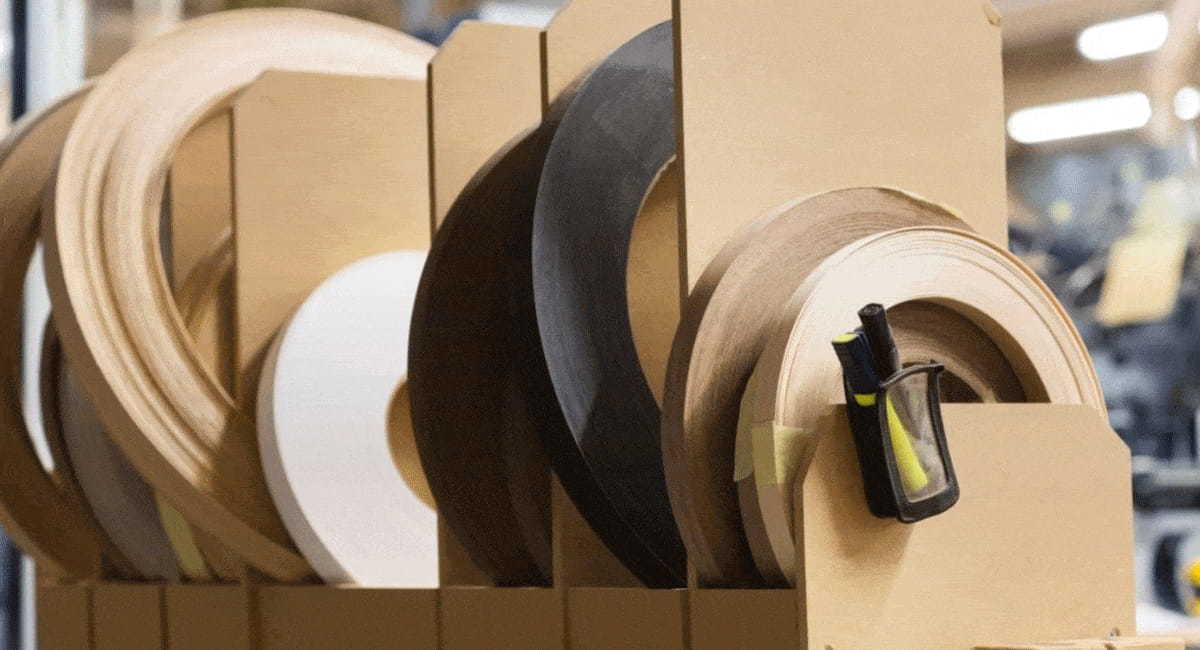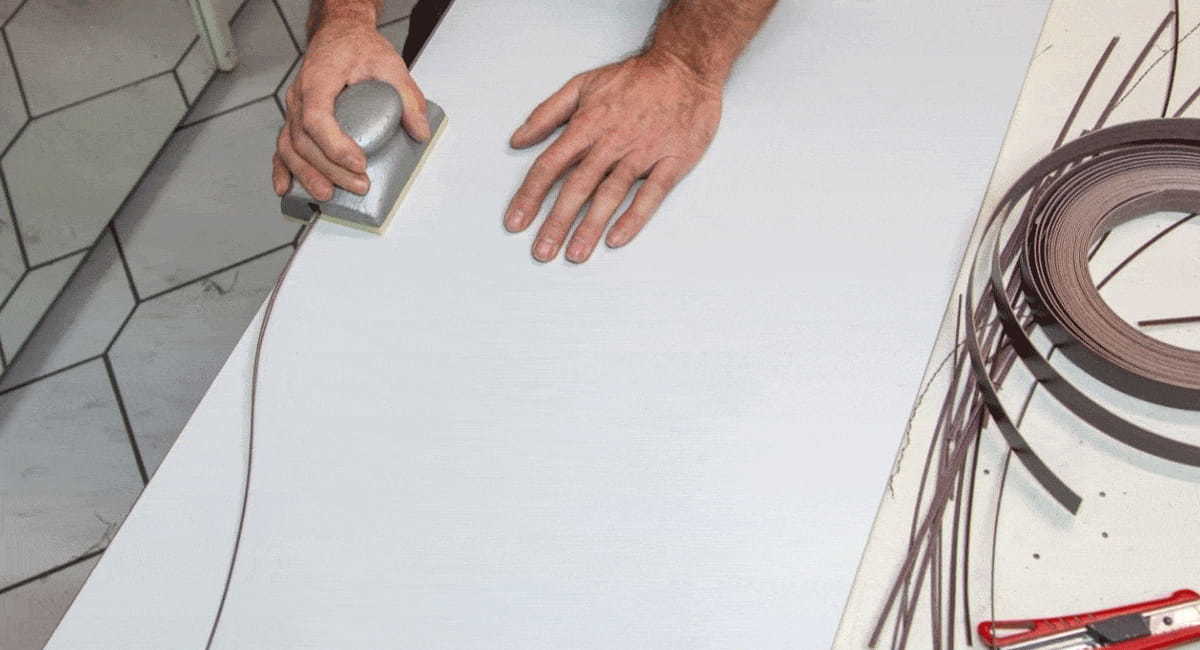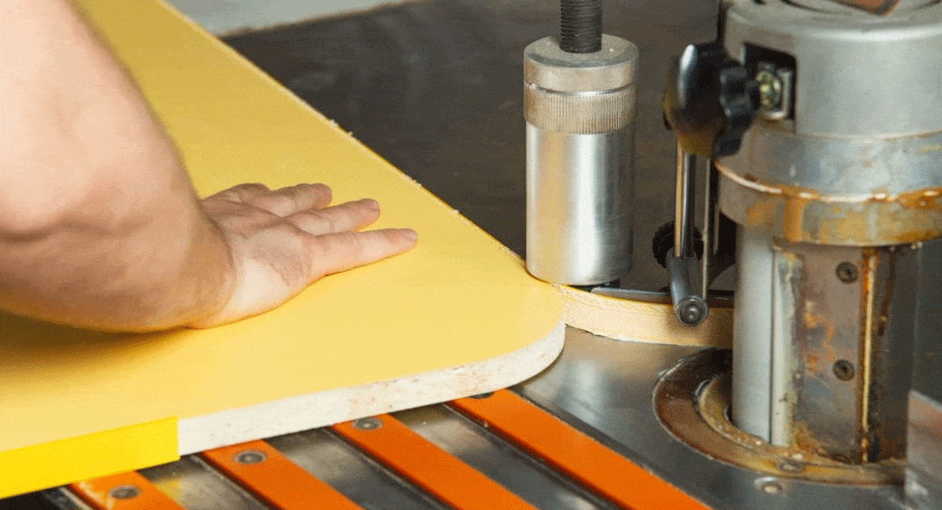Everything You Need to Know About Hardwood Edge Banding
If you're interested in woodworking, you know that edge banding is an integral part of the process. This is especially true when it comes to hardwood projects.
Hardwood edge banding is a practical and straightforward solution to the common problem of chipping, cracking, splitting, and peeling paint on the edges of wood boards.
Fortunately, there are various edge banding materials available so that you can find the perfect choice for your project.
In this post, we'll take a look at some of the different types of hardwood edge banding available. By the end of this post, you'll have a better understanding of which type of hardwood edge banding is right for your project
What’s The Purpose Of Edge Banding?
There is no more effective and aesthetically-pleasing way to finish the exposed edges of a hardwood floor than edge banding. It’s commonly used for hardwoods such as oak, maple, ash, and cherry. The top layer of veneer is often chipped off or even torn loose from the wood substrate due to bumps and scrapes from furniture and foot traffic.
With hardwood flooring, most manufacturers seal the top layer of wood veneer with lacquer to help protect it from damage. Inevitably, this lacquer will eventually fail or chip away over time.
The interior edges of your hardwood floors are often the most visible, so you have to take extra precautions to ensure that they are perfect.
It's almost impossible to hide the slightest chips or cracks when they happen. Since hardwood flooring is one of the more expensive types of flooring on the market, quality assurance becomes even more important.
Not only does hardwood edge banding protect your floors from wear and tear, but it also keeps them looking great for years to come.
Where Do We Apply Edge Banding?
The most logical place to apply edge banding is on the interior edges of your hardwood floor. Even if the rest of your hardwood floor looks pristine, consider applying wood veneer tape to all four edges for both safety and appearance.
What Are Some Of The Benefits Of Using Edge Banding?
The best benefit of edge banding is that it prevents your hardwood floor from deteriorating.
It’s important to remember that wood veneer is more susceptible to moisture and scrapes than harder materials like marble and granite.

By applying edge banding, you prevent the edges of your hardwood boards from chipping away, which in turn helps protect their appearance.
Where Won’t You Find Edge Banding?
While edge banding is used on the interior edges of hardwood floors, you won’t ever see it on DCI and prefinished hardwood floors. Prefinished and DCI flooring products already have a protective coating covering the edges.
Edge banding is used primarily for unfinished or factory-finished solid hardwoods that don’t come with factory-applied edge tape. The edge banding provides added protection from water, wear, and damage.
What Is Edge Banding Made From?
Several materials are commonly used for edge banding including: leather, plastic, and paper. You'll typically find edge banding in one or more of the materials below:
PVC
Compared to wood veneer tape, the most economical choice is PVC-core edge banding. It's also the lightest option compared to solid wood edging or steel.
However, many customers consider this material a "poor man's alternative" because it lacks durability and aesthetic appeal.
Not only is it extremely easy to damage, but its dark brown color doesn't look as pleasing to the eye as the other materials.
Wood Veneer Tape
One of the most common and often recommended options for edge banding is wood veneer tape.
The biggest benefit of using wood veneer tape is that it's very easy to work with, as it can be cut and applied using a standard iron.
This approach also makes onsite repairs a cinch, since you can piece together damaged sections of your floor.
According to the American Hardwood Export Council (AHEC), some species of unfinished hardwood planks require the use of wood veneer tape.
Solid Wood
Many customers prefer solid wood edging for both its durability and aesthetic appeal. The biggest drawback, however, is that it's the most expensive option on the market.
That being said, you can often cover more area with less wood and less effort compared to other edge banding options.
Aluminum Alloy
Using aluminum alloy for edge banding produces a lightweight and durable finished product that won't rust or discolor over time, even if it’s constantly exposed to moisture.
It's also the most expensive material of all the options, which is why some people prefer less expensive edge banding materials.
Steel
Steel is the most affordable of all the options, and is often used onsite for repairs or areas that are difficult to reach. This material is also durable and rust-resistant, which makes a popular choice with many customers.
If you're looking for an attractive finished product, however, then steel isn't the best choice.
How Is Edge Banding Applied?
The first step to applying edge banding is to cut it to size. The best way to do this is by scoring the back of your material with a utility knife, and then bending it until it snaps.
Wood Veneer Edging
If you're using wood veneer tape, then the next step is to apply hot hide glue or double-sided adhesive tape along the length of the material. When you're installing your veneer, be sure to orient it in a "veneer down" direction before pressing it down onto the hardwood floor.
Next, use a standard iron set at high heat and go over the entire surface until the glue is tacky.

Solid Wood Edging
When it comes to solid wood edging, you must first rip-cut your material to size. Some people find this step challenging because the high degree of difficulty makes it tough to get a straight cut.
Most hardware stores and flooring retailers will cut it for you, however, they may even do so for free (or charge a small fee) if you provide them the dimensions of your project.
A solid wood edging strip is typically held in place by either the tongue-and-groove system or adhesive caulking. The first step to applying tight-fitting strips is to use a utility knife or tin snips to carefully score the material along its length until it snaps cleanly.
Next, apply your adhesive or T&G system and press the edging strip into place.
To complete the process, you'll then need to use a belt sander equipped with 100 grit sanding belts to perfectly trim any excess material from around the perimeter of your floor.
Aluminum Alloy Edging
In some rare cases, aluminum alloy is applied using mechanical fasteners, but most of the time, it's installed using a combination of hot glue and double-sided tape.
Begin by applying the adhesive materials to the strip itself. Next, fold back one end of your edging strip and place it onto your hardwood floor before pressing down firmly with your hands.
Wrap the material around the edge of your floor until you reach the other end. You should fold back the rest of the strip and press down with your hands until it's fully secured. Finally, use a belt sander to remove any excess material from around the perimeter of your floor.
Steel Edging
Steel edging is typically held in place by adhesive caulking or mechanical fasteners. The first step to applying steel edging is to cut it to size by scoring the back of your material with a utility knife and then bending it until it snaps.
The second step is to apply adhesive caulking along the length of the hardwood floor, placing your edging strip in its proper position while the adhesive is still wet.
If you're using mechanical fasteners, you'll need to pre-drill holes along the length of your edging strip and then hammer small finishing nails into each hole.
Thing You Need To Consider When Edge Banding
Peeling
Peeling is a common problem when it comes to edging, because it occurs when the glue between the strip and edge fails.
To prevent peeling in the future, make sure that your adhesive or T&G system covers at least 1/16th of an inch of the strip's body. Both of these materials will eventually fail, so you'll have to replace your edge banding every few years.
In some cases, it may be necessary to apply a second layer of adhesive or T&G system over the first in order to prevent peeling from occurring due to low adhesion between the two.
Cost
Edging options are priced according to their material composition and the labor required to install them. You should consider your budget limitations before buying an edging strip because you might not be able to afford the most expensive options.
However, it's important to remember that cost-effectiveness doesn't always equal low quality either.
Adhesives And T&G Systems
Both of these systems provide strong adhesion, and they're widely available at hardware stores, lumber yards, flooring distributors, and home improvement retailers.
The main difference between the two is that adhesive caulking requires considerably more work to install (not including time) than the T&G system because you'll need to coat the entire length of your edging strip with adhesive and then press it into place, allowing for enough time to dry before walking on it.
Hardwood Edge Banding- The Conclusion
The different types of hardwood edge banding obviously share many similarities, but they also have their own unique characteristics that are important to know.
By understanding the differences between each type of edging system, you'll be able to make a more informed decision about how to proceed with your next hardwood floor installation project.
And if you’re planning a new project that will require construction materials, then read our post on Plywood vs Plyboard in order to make an informed decision.
Last Updated on April 30, 2022 by Tom Bradly

